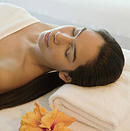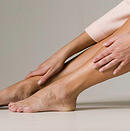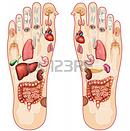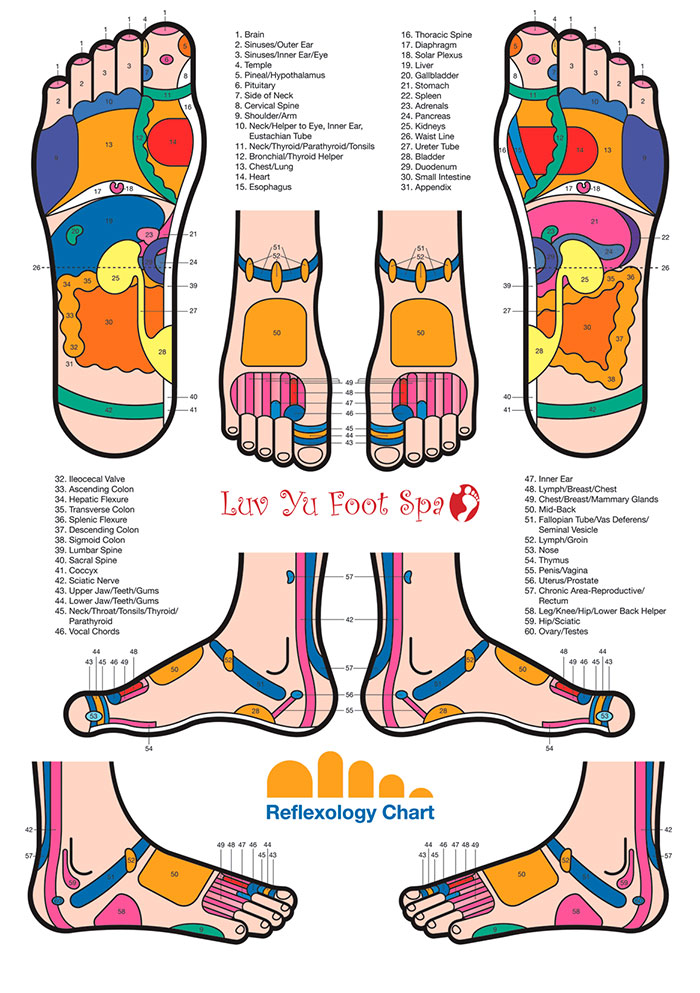What is reflexology?
Reflexology is an alternative medicine or pseudoscience done by using manual techniques and applying pressure to feet, hands, or ears at specific reflex points or zones. It brings about physiological and psychological normalization of the total body. The reflexology theory believes that the systematic zones and reflex areas on feet and hands reflects different parts of the body and work done on such areas will have physical effects to the body.

Reflexology as a frequent treatment
We live in a rushed modern society where the high paced and demanding lifestyle makes us vulnerable to tension, anxiety and fear. Our bodies are stressed and exhausted under such conditions. Reflexology expels the suppressed emotions of stress, relaxing both our bodies and our minds. It helps to alleviate the effects of stress by inducing deep relaxation. We recommend an 1 hour reflexology session each week to keep our bodies in best shape.

History of Reflexology
A widely held theory is that reflexology originated in prehistoric periods of China. There was also ancient documentations unearthed in Egypt with similar practices dated around 2000 B.C.. Reflexology was first introduced to the U.S. by William H. Fitzgerald, a ear, nose, and throat specialist, and Dr. Edwin Bowers in 1917. They believed that applying pressure on different areas of the body will have anesthetic effects. Later in the 1930s and 1940s, Eunice D. Ingham, a nurse and physiotherapist modified and refined the theory. She mapped zones on feet ,which she believed reflects on various parts of the body. Her procedures and methods, later developed by Laura Norman, are widely used by modern reflexologists.

Reflexology and PMS
Reflexology can prevent PMS and the discomforts of menopause as it tunes your system and brings well-being to your body. We suggest beginning reflexology two weeks before your menstrual cycle and have it at least twice a week because hormonal changes are taking place in your body during this time. Reflexology will stimulate circulation to wash away retained fluids and relieve the heaviness and bloated feeling.Our massagist will be working mainly on reflex zones such as ovaries, uterus, breast, kidney, ureter, bladder, solar plxus. You might feel some pain or soreness at the reflex points which is completely normal. We suggest you have a short time for first sessions and then come back for regular 1 hour sessions. The discomfort and pain of PMS may go away after about 5 sessions depending on your health condition.

Benefits of Reflexology
Reflexology helps to balance all body systems. It stimulates bloor circculation and other active healthy body functions and tunes our bodies to its finest harmony. Reflexology works particularly well on three specific levels – physiological, psychological and spiritual.
• Stimulates immune system
• Improves circulation
• Promotes metabolism
• Normalizes blood pressure (reduce high blood pressure)
• Reduces pain (post-surgical pain,Relief of constipation, nausea, anxiety, PMS, insomnia
• Promotes post-operation recovery
• Maintains a positive and balanced lifestyle
• Significant treatment to terminal diseases

How does reflexology work
The important step to a full understanding of reflexology techniques is an appreciation of the pressure points and zones and how they relate to the body. The following reflexology diagram shows the map of points and zones.




